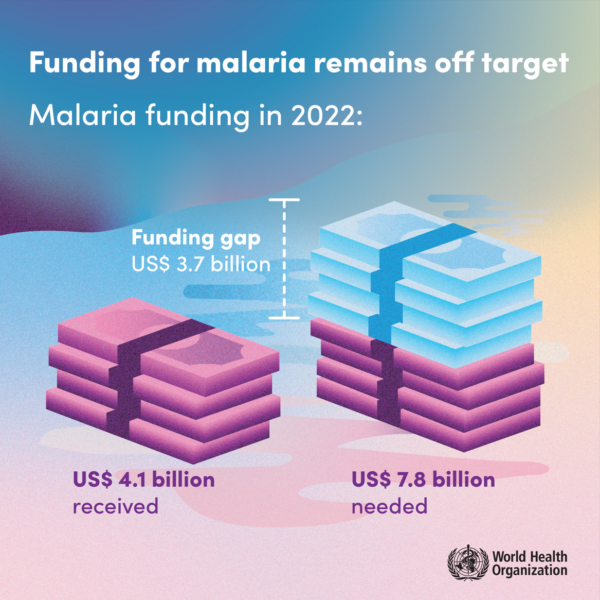
Progress against malaria continues to stall, according to the 2023 World Malaria Report, published today by the World Health Organization (WHO).
Despite the efforts of malaria-endemic countries and their partners, the world is worse off now than before the COVID pandemic both in terms of number of malaria cases and deaths.
The combination of limited resources, challenges such as drug and insecticide resistance, socioeconomic constraints, humanitarian crises, and climate-driven extreme weather events creates a challenging landscape for malaria elimination. If current trajectories continue, the goal of reducing malaria cases to 6.0 cases per 1000 population by 2030 will be missed by 89%.
The WHO report emphasises the importance of developing more efficacious tools to accelerate progress toward the global malaria targets. Interrupting the transmission cycle to reduce the spread of malaria is key to that aim.
At IVCC, in partnership with our stakeholders, we are committed to delivering a sustainable toolbox of vector control solutions that address the evolving challenges in vector control and malaria elimination.
Insecticide-treated nets continue to be the primary vector control tool used in most endemic countries. Over 254 million nets were distributed in 2022, up by 34 million compared to 2021.
A longstanding collaboration between BASF and IVCC to deliver a next generation active ingredient treated net formulation has been an important step in the fight against insecticide resistant mosquitoes.
Interceptor® G2, combines a pyrethroid (alphacypermethrin) with a new-to-public-health active ingredient, a pyrrole (chlorfenapyr), which represents a novel mode of action in vector control. In March 2023, the WHO strongly recommended the deployment of such nets in areas where mosquitoes have become resistant to pyrethroids.
This milestone is testament to the importance of product development partnerships to deliver high-impact, cost-effective prevention tools, adapted to the needs of endemic countries.
Despite the success of interventions such as the Interceptor® G2, global investment in overall malaria research and product development dropped by US$ 603 million in 2022 – its lowest recorded level in the past 15 years, and down by over 10% compared with 2021.
Climate change is also having a dramatic impact on malaria transmission and burden. The effects are seen in the gradual extension of the transmission range and seasonality of malaria, and an increase in the number of extreme weather events.
IVCC recognises the need for innovative tools to reach the most vulnerable populations especially in settings where ITNs and traditional indoor residual spraying (IRS) for fixed structures might not be practical.
We are working with partners to accelerate the availability of solutions that address these challenges, such as new tools which address outdoor biting or outdoor transmission.
The funding gap between the amount invested in malaria control and elimination continues to widen. With a shortfall of UD$ 3.7 billion in 2022, funding availability to support innovation, roll out of existing tools and the cost of procurement and delivery is increasingly uncertain.
This scenario, coupled with a global economy seeing ever-increasing costs for raw materials and logistics, means IVCC remains committed to exploring innovative strategies to expand the availability of cost-effective life-saving vector control tools. IVCC recognises the need for greater emphasis and recognition of country input into this ambition and makes sure that the considerations of malaria programmes are incorporated in all aspects of product development and distribution.
IVCC believes that it is only through partnerships, which take into account local needs, that vector control implementation can be expanded beyond the scope of donor-supported programmes and lead to the establishment of sustainable capacity.
The World Malaria Report, published annually, provides a comprehensive and up-to-date assessment of trends in malaria control and elimination across the globe. This year’s report includes, for the first time, a dedicated chapter focused on the intersection between climate change and malaria.
Find out more in this year’s World Malaria Report.



